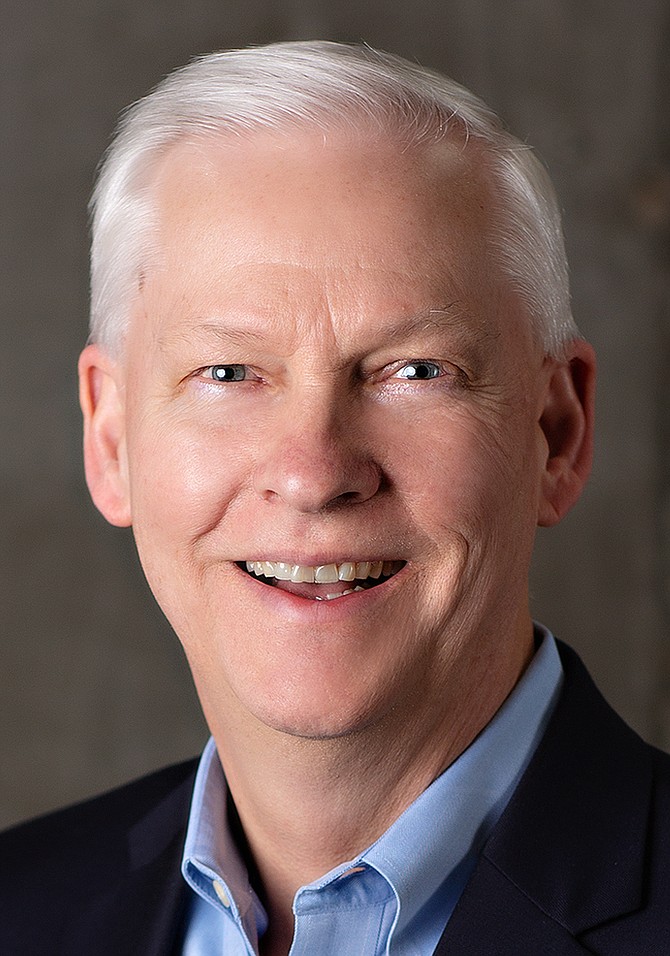Don’t buy into the failure story line

Rod Gramer
We have heard a lot at the Legislature this year about our schools being poor, our student outcomes being weak, and about little progress being made in education. Unfortunately, this storyline serves the purpose of those who advocate for the elimination or weakening of our public schools.
Furthermore, the “failure” storyline undermines the confidence parents, patrons and policymakers have in our schools, while sinking the morale of our educators, making their jobs even more difficult.
Yet, as the saying goes, there is another side to the story which we don’t hear much about.
The best way to compare how Idaho students do versus other students is reviewing the National Assessment of Educational Progress, known as “The Nation’s Report Card.” Every two years a representative sample of students in the fourth and eighth grades in all 50 states take the same assessment in math and English.
Last year Idaho’s fourth-grade students performed better on reading than all but four states. In eighth grade reading students in only three states performed better. In fourth-grade math only eight states did better and in eighth-grade math just three states outperformed Idaho. In all cases Idaho students performed above the national average.
Our students achieved these scores even though Idaho spends only $7,486 per student — the second lowest in the nation — compared to the national average of $12,201.
In 2018, Idaho’s ACT scores were higher than our six surrounding states — four of which spend considerably more on education than Idaho — and higher than the national average.
Only Iowa and Indiana had more high school students taking college-level classes for credit than Idaho in the most recent year measured. And last year students earned 215,815 college credits, up from 185,000 in 2018, one of the highest rates in the U.S.
Critics say our academic scores have flatlined. But last fall reading scores for our first-, second- and third-grade students were up 3-6 percent over the previous year, thanks to the state starting to invest in literacy.
One of the biggest problems with the public-schools-are-failing narrative is that it gives the education critics the ability to ignore the real, deeper and more entrenched challenges we face. Problems like adequate and unequal funding, facilities, lack of uniform course offerings across the state, a patchwork of full-day kindergarten classes, teacher recruitment, retention and pay.
And it gives them the opportunity to ignore the biggest challenge of all — the achievement gap between our economically disadvantaged and under-served students and our more economically advantaged students.
Is it possible these inadequacies are what led 65 percent of Idahoans in a BSU study to rate schools as fair or poor? Could these inadequacies also be the reason 74.5 percent of Idahoans say the Legislature’s No. 1 priority should be education? Clearly, Idahoans want better public schools — not their elimination or weakening.
Instead of buying into the failure storyline we should be focused on closing the achievement gap between our Hispanic, American Indian and low-income students and their Caucasian and more affluent peers.
We could begin by helping get these students ready for school. Last fall 73.5 percent of low-income students; 78.5 percent of Hispanic students; and 77.6 percent of American Indian students were not ready to learn when they entered kindergarten. Yet Idaho is one of only four states that does not invest in getting kids ready for school.
Governor Little and the Legislature have taken a positive step by making literacy a top priority and investing in literacy. But the state needs a comprehensive plan to address the gap problem and the political will to put muscle behind it.
No one denies that we face many challenges in education. These challenges are real, complicated and must be addressed, but our schools are not failing. And for the many challenges we have in education we cannot put the solutions on our educators alone without looking at the role we all play.
The real story is if you compare Idaho’s outcomes to other states both our students and educators are achieving uncommon results with less than common support.
Especially from their harshest critics.
• • •
Rod Gramer is president of Idaho Business for Education.










